Story
BLOG: PML’s Dr Saskia Ruhl describes life onboard the One Ocean Expedition
09 May 2025
PML’s Dr. Saskia Rühl, a specialist in digital marine biology and machine-learning techniques for data classification, is currently sailing onboard the Statsraad Lehmkuhl, as part of the One Ocean Expedition. Two weeks since she embarked from Tromsø, she shared the following blog about daily life aboard the 111-year-old vessel, collecting science and delivering lectures…
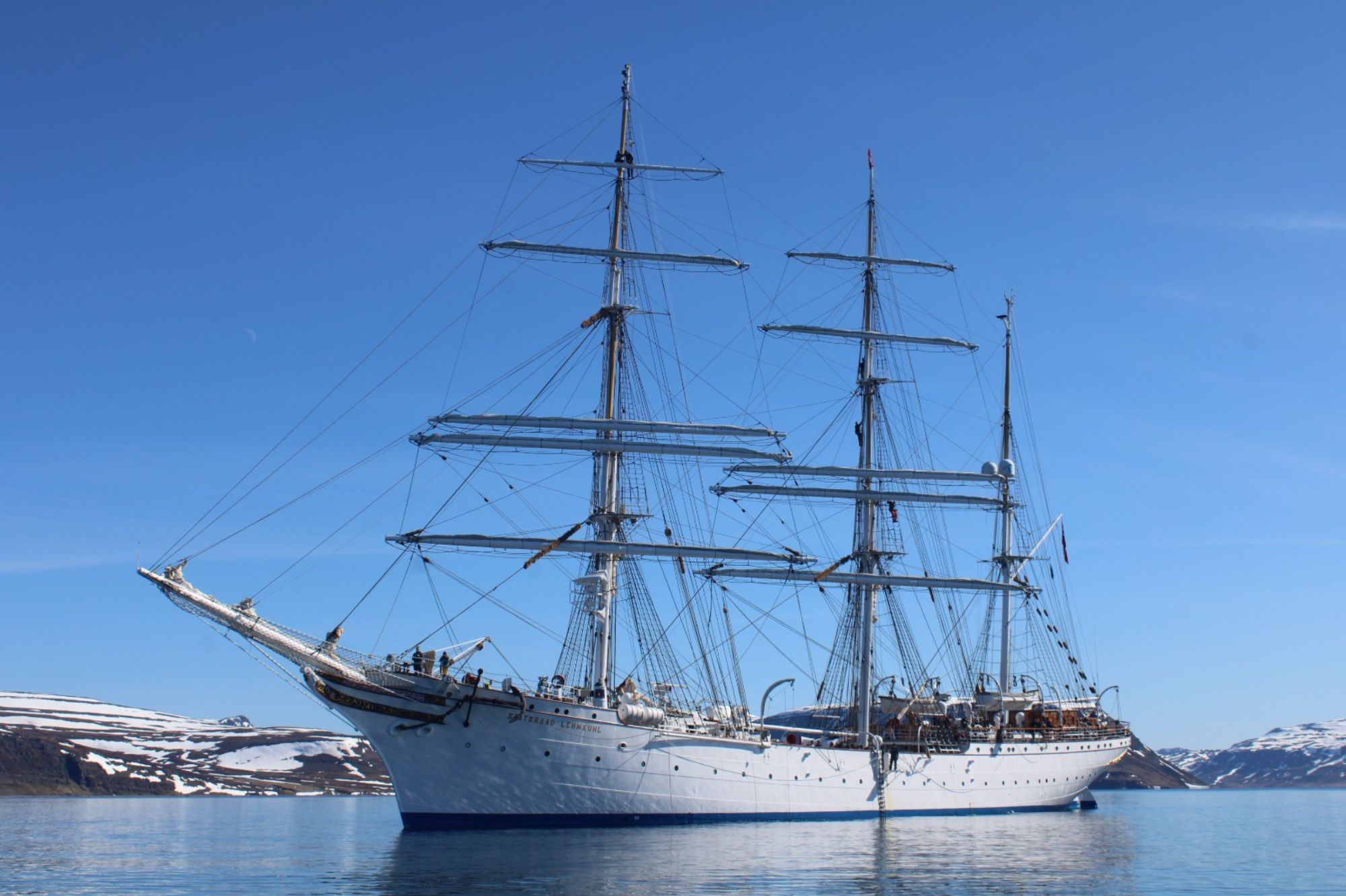
“We have reached the end of the first part of the ESA Ocean Training Course 2025 expedition, from Tromsø to Reykjavik, in good spirits and in possession of a lot of (hopefully) good samples and data.”
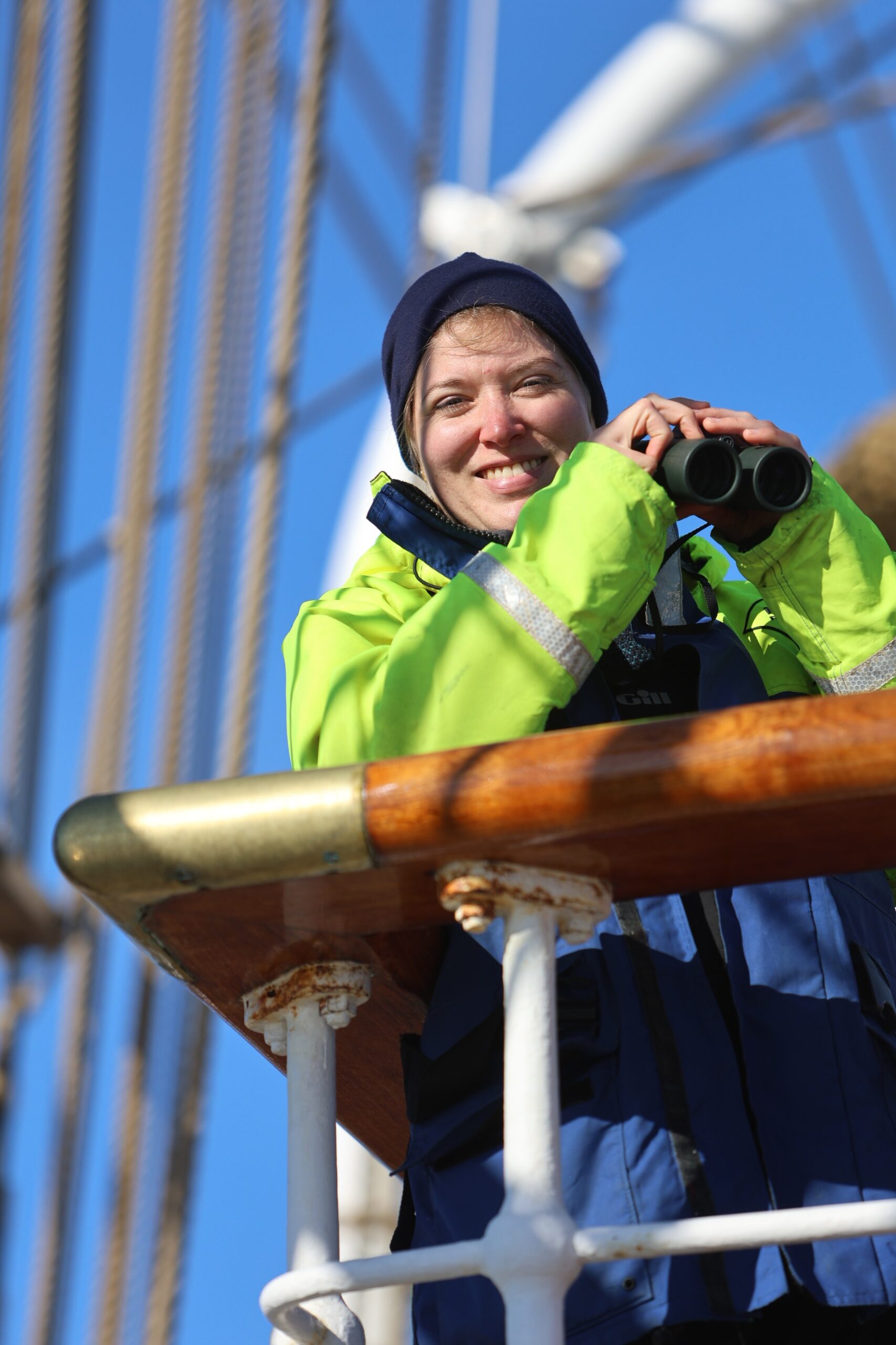
“My typical day started at 3:30am, with the wake-up call from the previous watch shooing us from our hammocks and up on to deck to muster, so that they could go to bed at 4. Between 4am and 8am our watch consists of active duties at the Helm (steering the ship), Lookout (calling out sightings from the fore deck), Buoy (calling out sightings from the aft deck) and Fire watch (patrolling the ship to ensure all is in order). Those who are not on active duty help with the sailing tasks by pulling and fastening ropes, climbing in the rigging to stow or unfurl sails, and cleaning the deck, ready for a new day.”
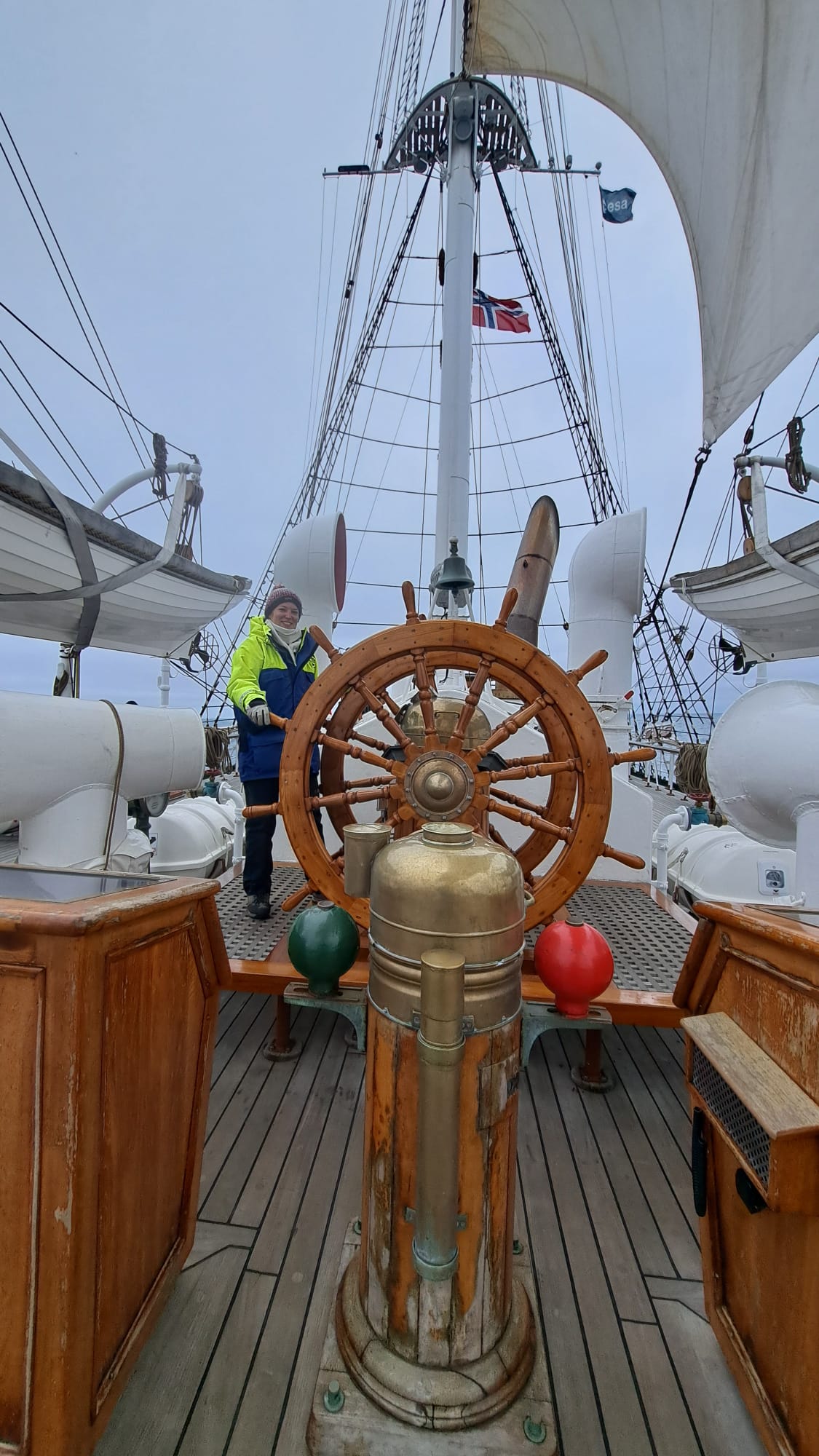
“Of course we’re not always busy, so during quieter times we learn from our watch leaders about the different names of sails and masts, in Norwegian of course, as well as various knots. If it’s not too rainy, we like to do some 5am yoga on deck, though it’s hard to be flexible when you’re wearing several layers of fleece and wool under waterproof trousers and jackets.”
“We also give small talks to each other, as a way to share knowledge about our science interests or anything else we might want to discuss with the group. For example, we had talks about plankton, first aid, respect, marine snow, light, and more! At the end of our watch, we get relieved by the next group, and are free to go for breakfast.”
“Many take the opportunity to nap afterwards, but on station days we ready ourselves to stop the ship, and take samples with nets, niskin bottles, CTD sensors and even buckets. There are also many sensors on board measuring biological, chemical and physical parameters all along our journey, including between stations, and their data is being analysed by the students and lecturers as we go.”
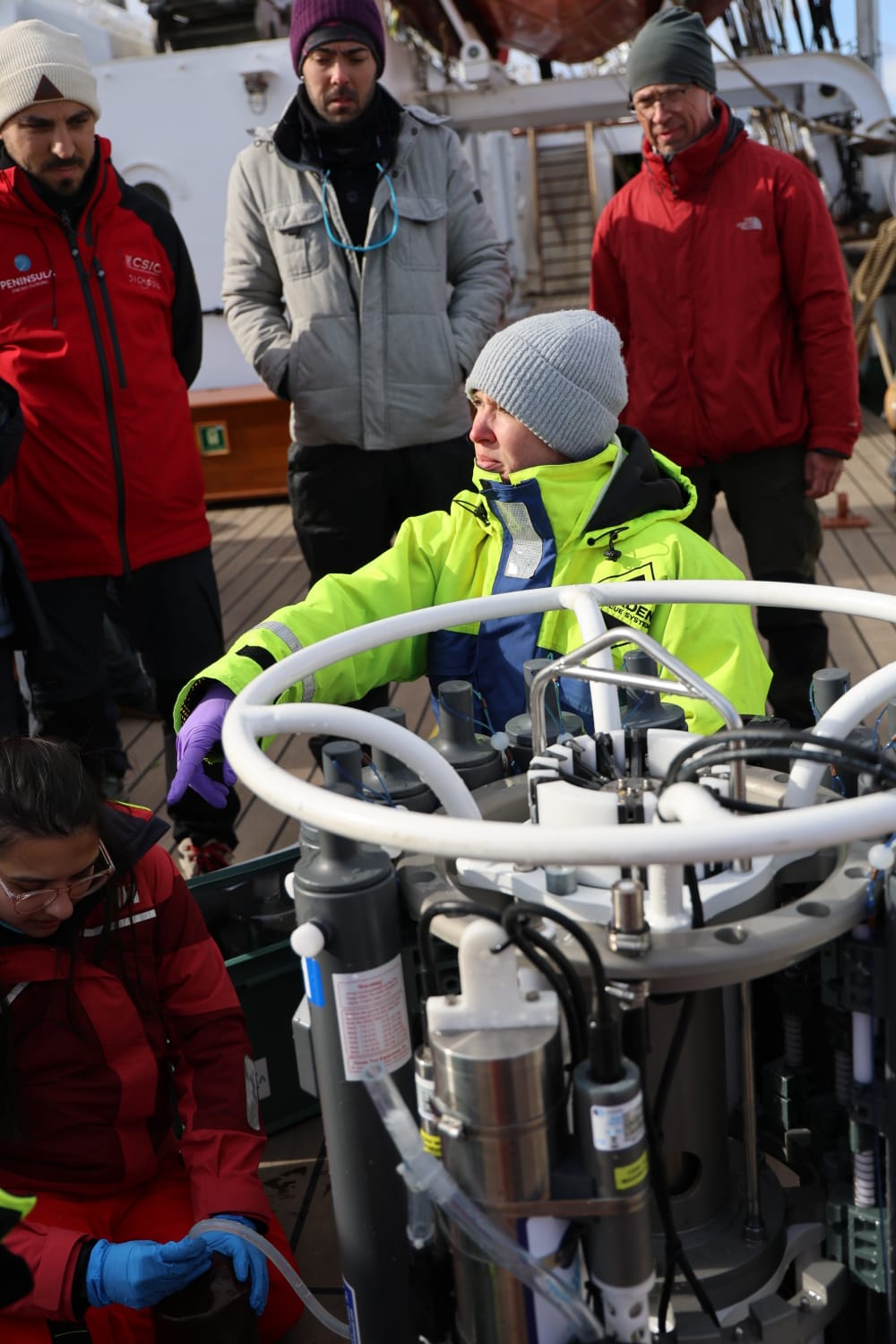
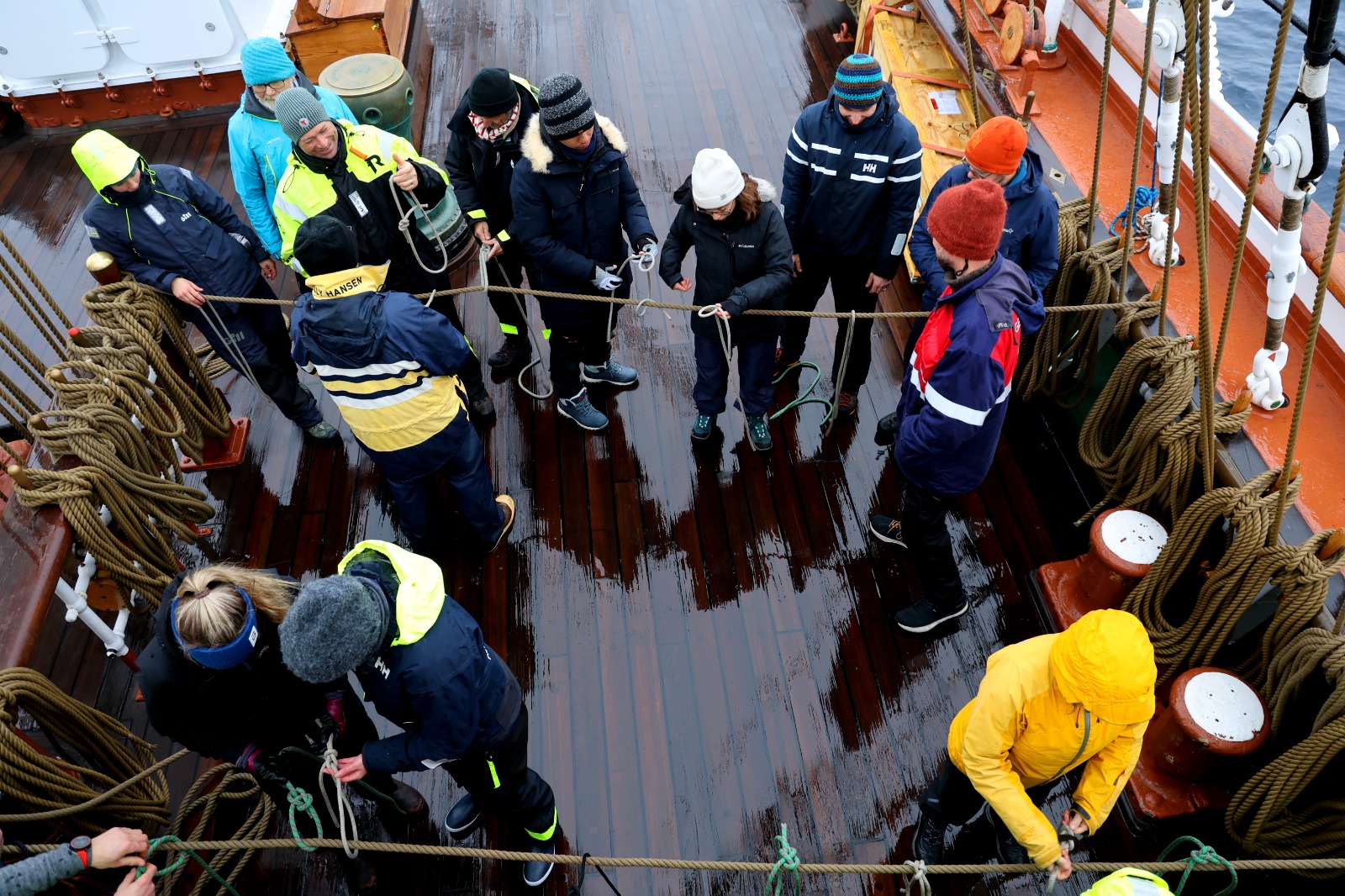
“For me, I collect samples with a phytoplankton net that is deployed vertically, and a High Speed Net that is towed behind the ship, and analyse them in a Planktoscope, which is a small bench-top plankton and particle imager. On a station day, depending on how many samples are being taken, this can take until mid-afternoon, so there isn’t much time before the start of the evening watch from 4-8pm, during which we do much of the same as during the morning watch, keeping the ship on course, clean, safe, and well-trimmed.”
“Our days on board are long, but we have a lot of fun too! We’ve learned some shanties and there were competitions between the watches, with home-made shanties, judged by the crew. Spotting a whale or dolphin, and sometimes even an unusual bird, often gathers a crowd, and we crowned a queen of knots and hitches, who defeated all others in a speed-knotting competition. There are regular science meetings, and a lecture almost every evening, so in this multi-disciplinary crowd we all learn to broaden our points of view and appreciate areas of science that we usually wouldn’t encounter.”
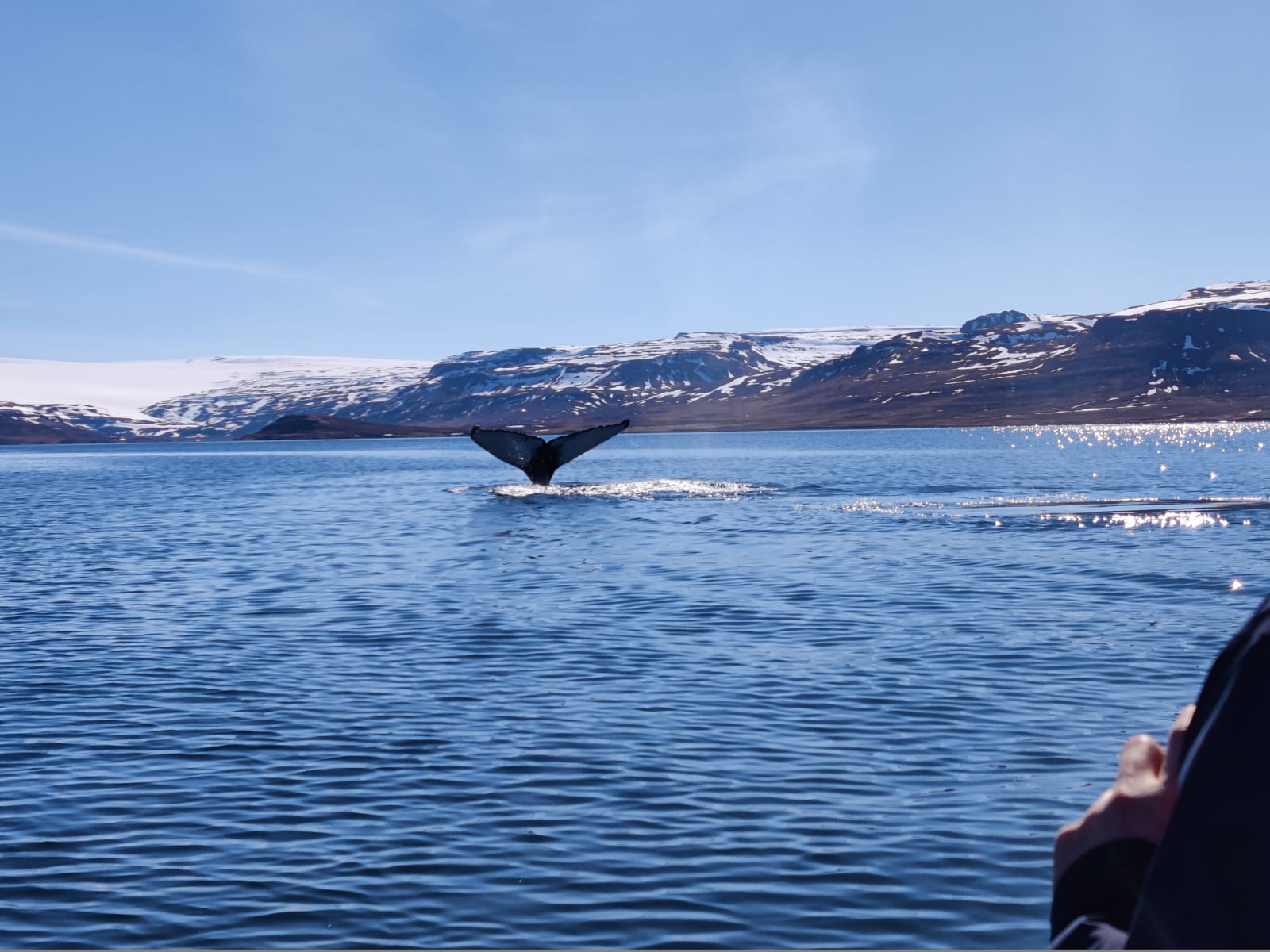
“Refreshed from our time on land, we will now start the second part of our journey, and head to Nice via the Strait of Gibraltar and Mahon, so wish us Fair Winds!”
Related information
The One Ocean Expedition 2025-2026 is a 12-month voyage held onboard the Statsraad Lehmkuhl, a 111-year-old vessel adapted with state-of-the-art laboratory facilities. The voyage is aimed at raising awareness and sharing knowledge about the crucial importance of the ocean for a sustainable future on a global scale.